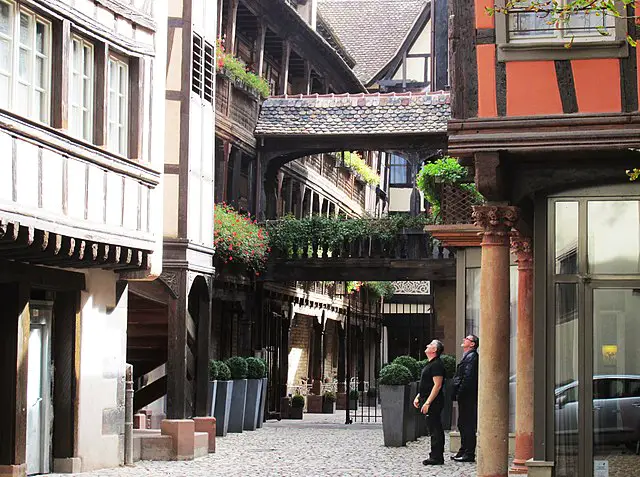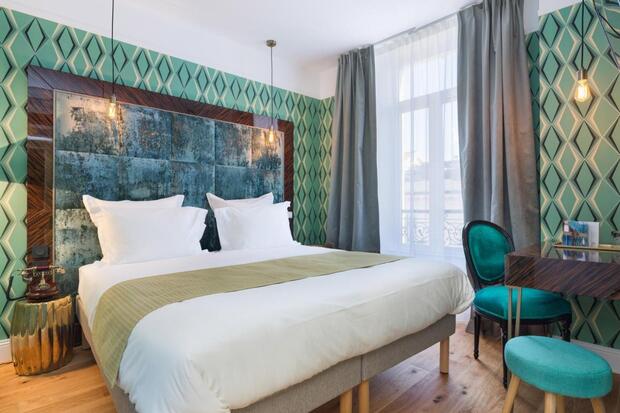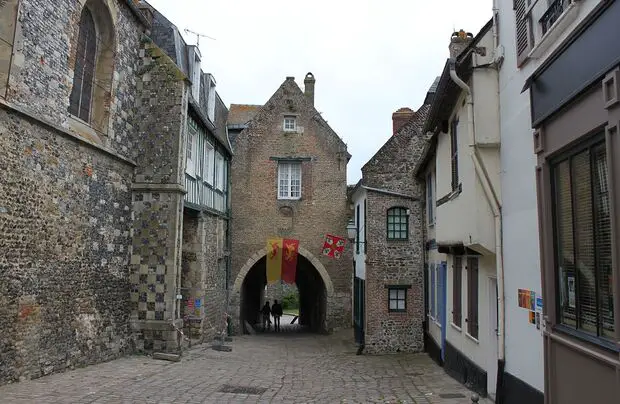Carcassonne is a truly medieval dream frozen in time. Imagine a castle perched on a hill, its imposing towers and defensive walls telling a thousand stories. It’s a place where every stone and every alleyway whisper the legends of yesteryear.
The Medieval History of Carcassonne
Carcassonne’s exciting history dates back to Roman times.
Perched on a hill overlooking the Aude Valley, Carcassonne was a strategic stronghold, offering natural defenses and panoramic views of the surrounding area.
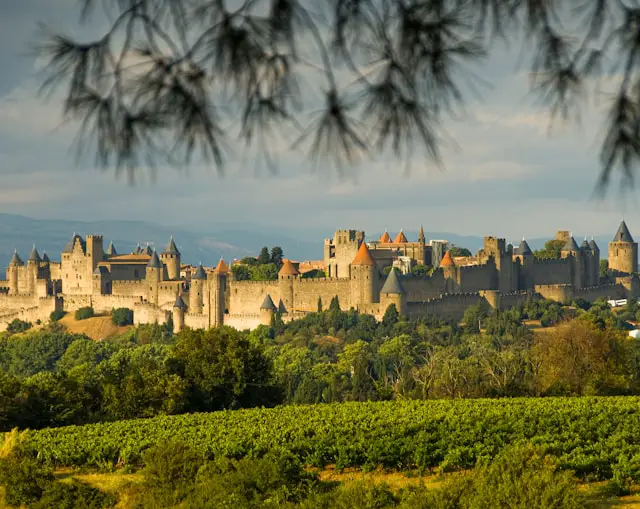
Thanks to its privileged position on the trade route linking the Mediterranean to the Atlantic, the town became an ideal location in the Middle Ages.
In the 13th century, the town found itself at the heart of numerous battles, and was therefore strengthened with iconic ramparts and a fortified castle, no less! This fortified part of the town became known as the Medieval Cité.
Its heritage continues to fascinate visitors from all over the world, who are drawn to the town by its historical importance and medieval treasures.
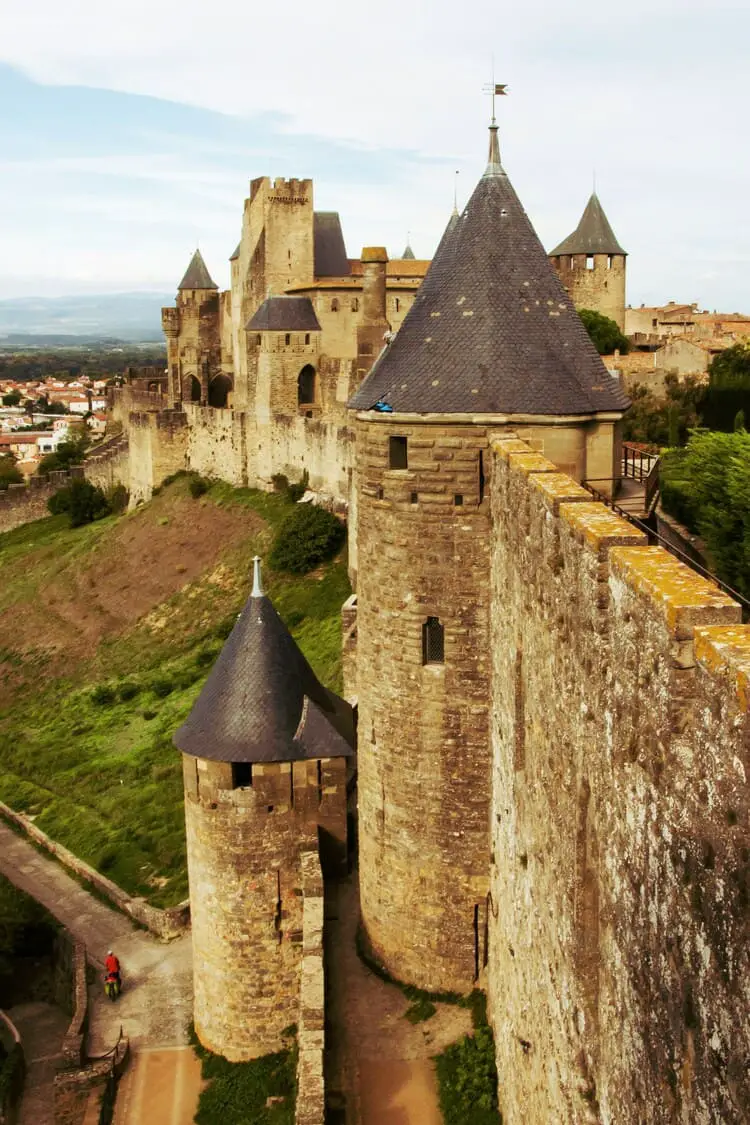
Architecture and Conservation
Carcassonne’s medieval architecture is a real journey back in time.
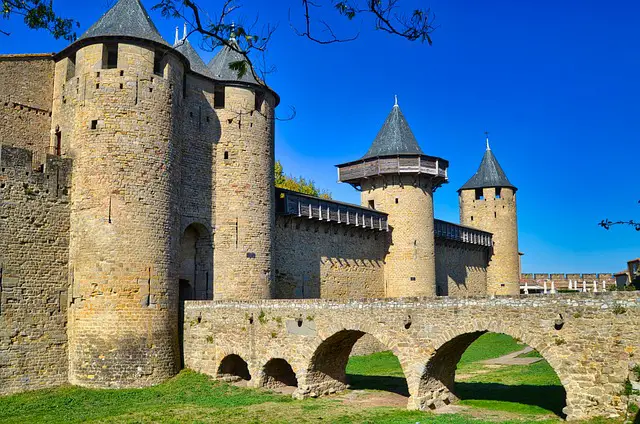
Its imposing ramparts, stretching for almost three kilometers, and its 52 towers offer a breathtaking view of the town and its surroundings.
Dominating the Medieval Cité, the Château Comtal is an architectural gem. Once the residence of local lords, it provided a last line of defense in the event of an attack.
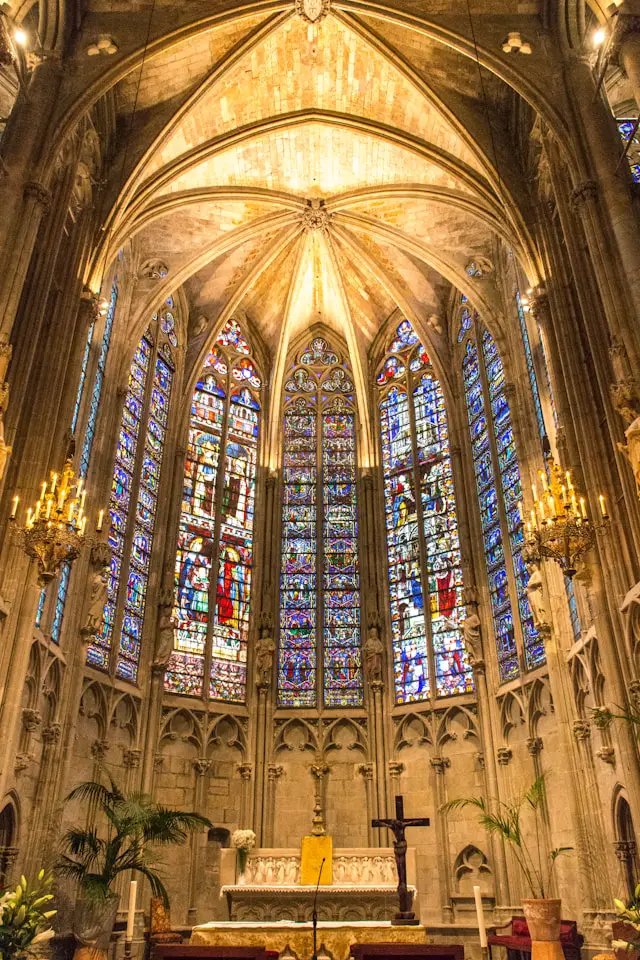
The Basilique Saint-Nazaire, located in the heart of the Cité, is a masterpiece of Romanesque and Gothic architecture. Its elegant vaults, stone carvings, and colorful stained glass windows are truly impressive.
In the cobbled alleyways of Carcassonne, the magnificent half-timbered houses, typical of medieval architecture, add a touch of authentic charm.
Covering almost 17 acres, the Cité houses many other gems including a basilica, gardens, museums, and a theater.
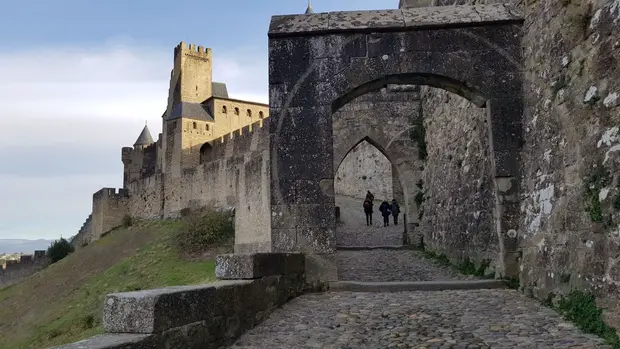
The preservation of Carcassonne’s heritage is exemplary; it has been listed as a UNESCO World Heritage Site since 1997.
Daily Life in the Middle Ages
What might life have been like in medieval Carcassonne?
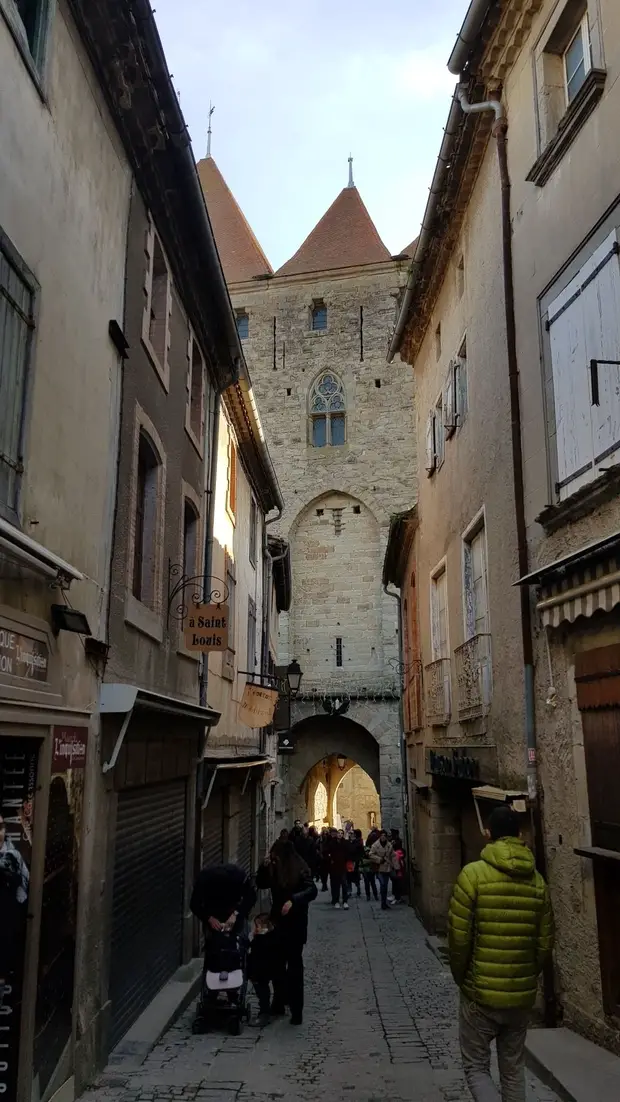
Back then, Carcassonne’s narrow, cobbled streets were teeming with shops, from artisans’ workshops to merchants’ stalls selling local produce.
The town would have been bustling with all kinds of activities: weaving (essential to the local economy), forging, leatherworking (to make clothes, shoes, and armor), music and dance (with medieval instruments), heraldry (creating coats of arms), archery (to defend the Cité), and more…
Despite challenges such as difficult living conditions and a hierarchical society, daily life was marked by a sense of community, tradition, and resilience in Carcassonne.
Folklore and Medieval Legends
The Legend of Lady Carcas
Legend has it that Carcassonne takes its name from an event that occurred during Charlemagne’s siege of the town.
After 5 years of siege and severe famine, Lady Carcas enacted a clever ruse, by simulating a defense with mannequins and sacrificing her last pig by throwing it out and making Charlemagne believe they still had plenty of food.
Charlemagne, believing the town to be invincible, withdrew. Lady Carcas celebrated the victory by sounding the trumpets: “Carcas sonne” (Carcas rings).
A statue of her Ladyship welcomes visitors to the Porte Narbonnaise.
The “Carcassonne” Board Game
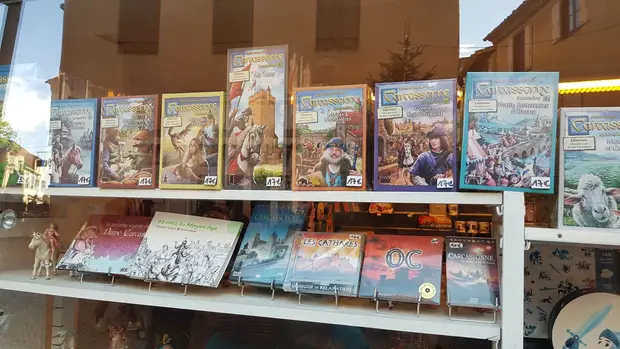
“Carcassonne” is a captivating strategic board game set in a medieval universe.
Players build the board as they go, with tiles representing a variety of landscapes such as roads, fields, abbeys, and fortified cities.
Players must skillfully place their pieces to earn points. It’s a playful experience rich in strategy and suspense!
Cassoulet
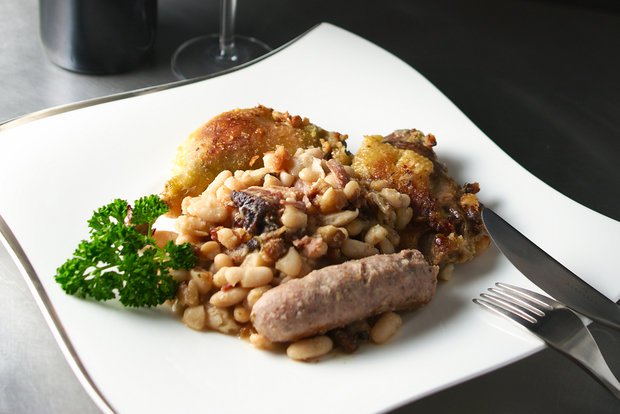
Cassoulet, the region’s signature dish, is at the heart of a rivalry between Castelnaudary, Carcassonne, and Toulouse.
Its origins, colored with legends, date back to a time when it was a common dish, concocted with leftover meat and beans.
Today, this dish, rich in flavors and textures, embodies the conviviality of family meals.
Carcassonne Today
Today, Carcassonne has succeeded in reconciling its rich medieval past with a modern urban atmosphere.
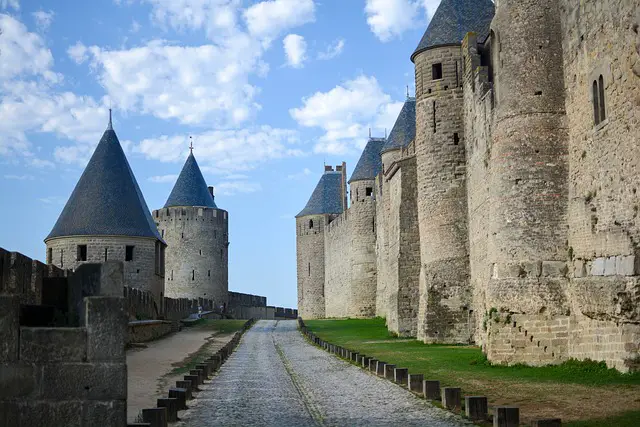
The Medieval Cité, with its authentic architecture and narrow cobbled alleyways, continues to attract visitors from all over the world.
Almost entirely pedestrianized, it also offers a contemporary experience, with stores and restaurants serving tasty local cuisine.
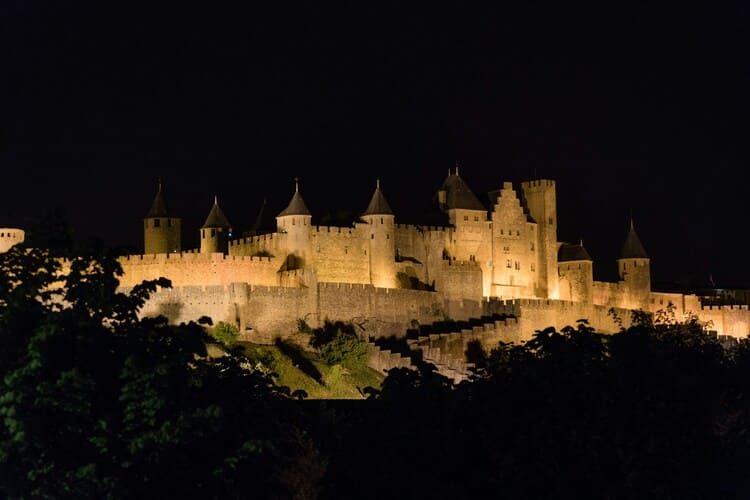
I aim to share my tips and recommendations for the beautiful country of France. My goal is to help you plan your next adventure, whether it’s a weekend getaway or a once-in-a-lifetime trip. From finding the best hotels and restaurants, to discovering unique activities and sights, I’ve got you covered!

